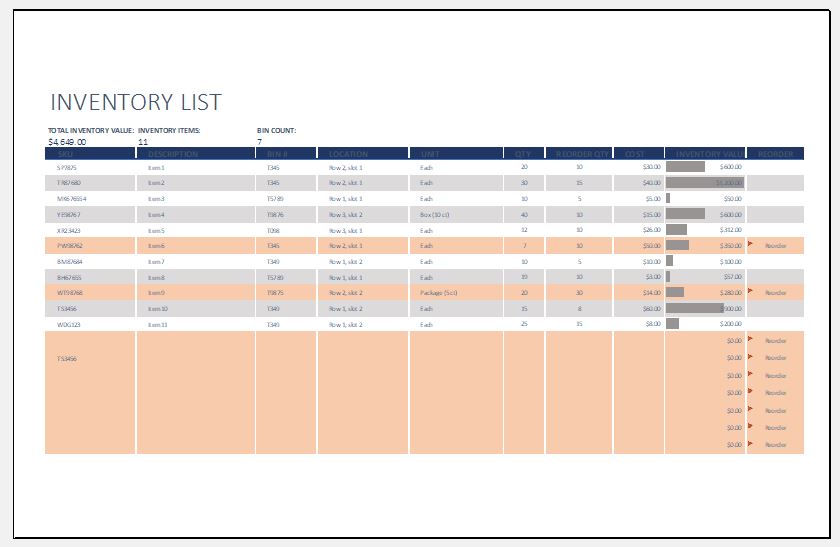Small Business Inventory Spreadsheet
Business inventory is an economic figure; management is the most integral part of any business. Business inventories track the dollar amount held by retailers, manufacturers, or wholesalers.
A small business inventory gives precise data on current and inbound stock levels and connects the sales and cost of goods an organisation sells.
How do small businesses manage inventory?
Management of inventories and orders is an essential part of every business and needs serious attention. If not, it results in lost or delayed orders, which can make a customer dissatisfied and leave the company.
Below are mentioned the ways for small business inventory management:
Get to know the differences between product types
This can be divided into four main groups:
- Item: This is a simple product delivered to the warehouse. No packaging or assembly is involved, and it is ready to be delivered to the customer.
- Assembly—In the warehouse, an item is assembled using smaller parts. For example, an automobile is constructed in a warehouse before being sold to the client.
- Family—A group of identical items. Take the clothing industry, for example, where one single shirt comes in three different sizes, i.e., large, small, and extra-small, and is kept in a warehouse for sale.
- Case-pack-Bundle of an item packed together to make one. A good example is when a company delivers a pack of 20 pairs of shoes to a wholesaler for further individual sale.
Mention SKU numbers, barcodes, and product features
The SKU of a product is essential, and it helps track it down in less time and without any panic. SKU also differentiates one seller’s product from the competitor selling the same thing.
A Small business should do its product specification. It should include the following:
- Product name
- SKU and UPC numbers
- Descriptions (colour, size, dimensions)
Track your target customers
A business shall know which customer is buying the product and how many are repeat customers—tracking of peak selling and low sales months.
Make a system for processing and fulfilling the orders
It is very important as many orders generate profits for a business. The following points should be considered to chase the orders on time:
- Make a sales order in the accounts books.
- Check inventory for the availability of a particular product.
- If inventory is available, ship it to the customer and calculate the cost.
- Charge the payments.
- Change the sale order into an invoice, apply for the payment, and close the transaction.
Monthly audits
This is to keep records and check.
How is MS Excel useful in preparing small business inventories?
In today’s technological world, MS Excel is widely used by businesses to keep track of their inventories. Inventory management is one of the most used functions of MS Excel. Using this tool saves any business money and time. MS Excel is more prevalent in small-sized companies where inventory consists of few items.
Excel is a convenient option for small businesses to keep a record of:
- Sales & Purchases
- Orders and deliveries to customers
- Data keeping
Excel is built with various formulas to record and maintain daily business activities.
- Student Entry & Exit Log
- Gantt Chart for Smaller Projects
- Behavior Log of Child for Schools
- Loan Repayment Tracker
- Product Sales Tracker Template
- Debit Memo Template for Excel
- Winter Attire Inventory
- Financial Projections Worksheet
- Employee Absence Tracker
- Weekly Sales Report Template
- Budget Vs Actual Statement
- Remote Work Attendance Tracker
- Mileage Expense Report Template
- Fitness Calendar Template
- Project Gantt Chart
← Previous Article
Budget Templates for EveryoneNext Article →
Grocery List Template
Leave a Reply